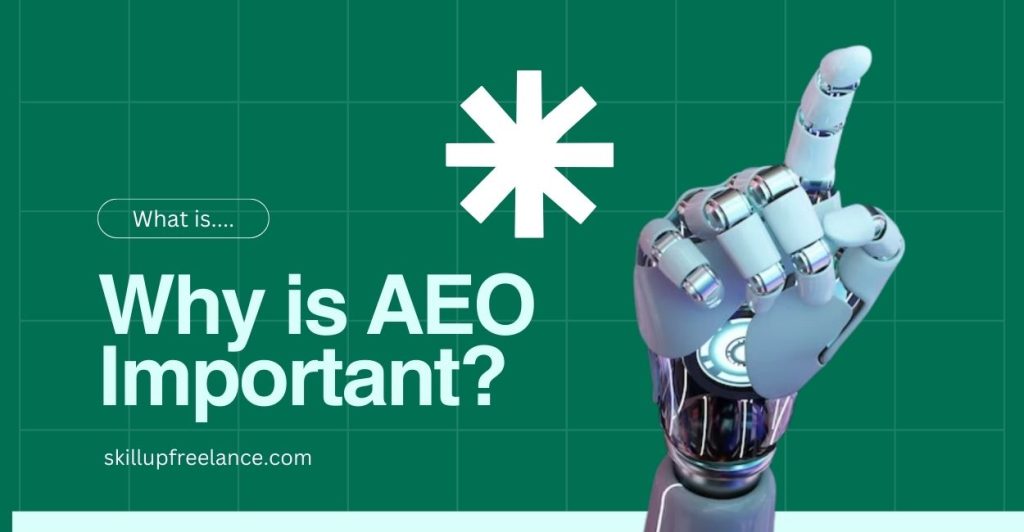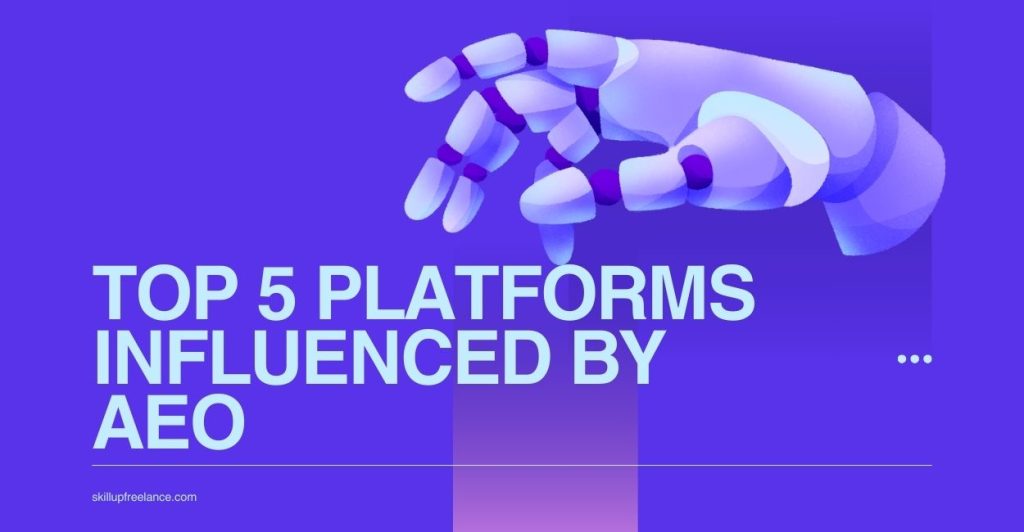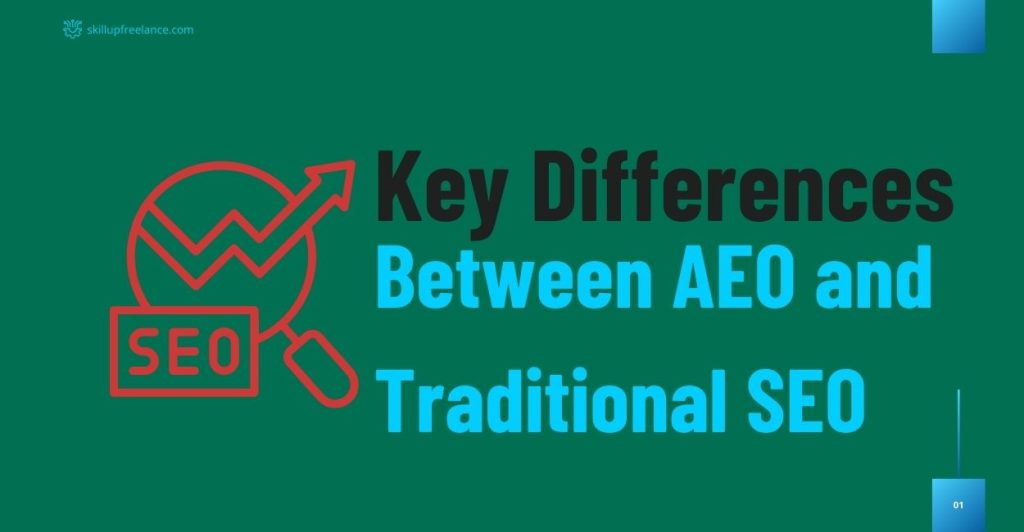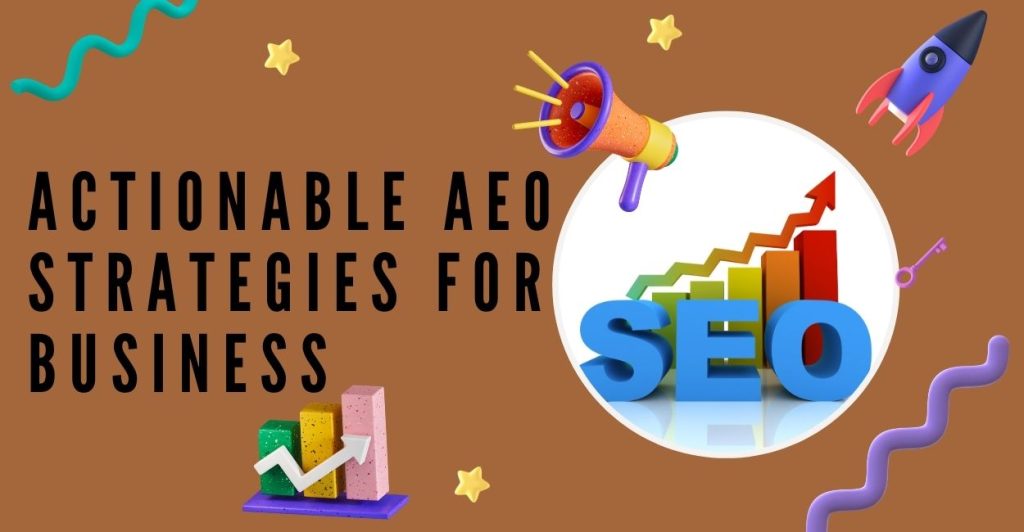How AI is Changing Answer Engine Optimization (AEO)
Answer Engine Optimization (AEO) is transforming the way businesses and marketers enhance their digital presence and visibility. As AI-powered technologies redefine search and information retrieval, AEO has become essential to ensuring brands stay relevant. In this comprehensive guide, we’ll explore how AI is changing AEO, its implications for digital marketing, and actionable strategies to succeed in this evolving landscape.
Introduction to AEO
What is Answer Engine Optimization?
Answer Engine Optimization (AEO) is the process of tailoring content to ensure its inclusion in AI-powered answer engines such as ChatGPT, Google AI Overviews, and Perplexity. These platforms prioritize delivering concise, accurate, and contextually relevant answers directly to user queries, bypassing the traditional search results model.
Unlike traditional Search Engine Optimization (SEO), which focuses on improving a webpage’s ranking on search engine results pages (SERPs), AEO zeroes in on optimizing specific pieces of content to be retrieved as the most relevant answer by AI systems. This involves strategic use of schema markup, structuring content into digestible chunks, and aligning content with conversational queries or user intent.
By adopting AEO strategies, businesses can ensure that their content is not only visible but also prominently featured as authoritative answers in the AI-driven landscape.

Why is AEO Important?
The rise of AI-driven systems represents a seismic shift in how users interact with digital content. Here’s why AEO has become indispensable for businesses and content creators:
- The Shift Towards AI-Powered Answers
AI systems are rapidly becoming the go-to solution for users seeking quick, accurate information. Platforms like ChatGPT and Bard synthesize responses from vast datasets, prioritizing relevancy and user intent. Traditional search engines often require users to sift through multiple links, whereas AI answer engines simplify this process by delivering concise, synthesized responses.
By focusing on AEO, brands can adapt to this paradigm shift and ensure their content is prioritized in AI-generated answers.
- Competitive Advantage
Businesses leveraging AEO gain a significant edge over competitors who still rely solely on traditional SEO methods. With AI answers becoming more prevalent, appearing as a trusted source in these systems builds authority and trust with users, leading to increased brand visibility and engagement.
- Changing Consumer Behavior
Today’s users expect immediate, accurate answers without wading through a sea of links. Gartner predicts that by 2026, traditional search engine usage could decline by 25% as AI-powered systems become mainstream. AEO ensures that businesses remain relevant in this evolving landscape, capturing user attention where it matters most.
- Enhanced Personalization
AI systems deliver highly tailored responses by analyzing user history, preferences, and location. By optimizing content for such systems, brands can align their offerings with individual user needs, fostering better engagement and conversion.

Platforms Influenced by AEO
Several leading platforms have embraced AI answer engines as a core part of their functionality. Let’s explore how AEO plays a critical role in ensuring visibility on these platforms:
ChatGPT
OpenAI’s ChatGPT is a prominent example of an AI system delivering synthesized, conversational answers. It processes billions of data points to answer queries ranging from simple definitions to complex problem-solving. AEO helps businesses ensure their content is structured in a way that aligns with ChatGPT’s answer-generation process.
Google AI Overviews
Google has introduced AI-powered overviews in its search results, delivering summaries or direct answers to queries at the top of the page. These overviews rely heavily on structured data, schema markup, and well-optimized content to pull authoritative information. AEO strategies enable businesses to secure a spot in these coveted positions.
Perplexity AI
Perplexity AI, another AI-powered search tool, prioritizes delivering fact-based, concise answers. Optimizing content for clarity, relevance, and accuracy ensures that businesses can make their mark on this emerging platform.
Google Knowledge Panels
Knowledge Panels provide summarized information about entities such as businesses, individuals, and concepts. These panels are often generated using structured data and schema markup, making AEO crucial for ensuring visibility and control over how your brand is represented.
Bard
Google Bard, designed for conversational queries, leverages advanced Natural Language Processing (NLP) to generate user-specific answers. Brands optimizing for Bard through AEO ensure their content is accessible, relevant, and engaging to users.
| Platform | AEO's Role |
|---|---|
| ChatGPT | Structures content to align with ChatGPT's answer generation. |
| Google AI Overviews | Uses structured data, schema markup, and optimized content for placement. |
| Perplexity AI | Optimizes content for clarity, relevance, and accuracy. |
| Google Knowledge Panels | Uses structured data and schema markup for visibility and brand control. |
| Bard | Ensures content is accessible, relevant, and engaging for conversational queries. |
Deep Dive: Benefits of Optimizing for These Platforms
Brand Authority
When your content is featured as a trusted answer in AI-generated outputs, it enhances your credibility and establishes your brand as an authority in your niche. This trust can lead to higher user engagement, loyalty, and conversion rates.
Higher Click-Through Rates (CTR)
Although AI systems provide answers directly, they often link back to the source for more information. Being the primary source of these answers can lead to increased traffic and higher CTRs, especially when the content is well-structured and informative.
Reaching a Broader Audience
AI systems cater to diverse user needs, including conversational and voice queries. AEO ensures your content is optimized for these varied query formats, allowing you to reach a broader, more diverse audience.
Control Over Brand Representation
By aligning your content with AEO principles, you gain more control over how your brand is represented in AI-driven outputs, reducing the risk of misinformation or misrepresentation.
Actionable Tips for Optimizing Content for AEO
- Use Schema Markup: Implement structured data to help AI systems understand and extract your content more effectively. Schema markup is essential for platforms like Google Knowledge Panels.
- Focus on Answering Questions: Optimize content to address specific user questions. Use conversational tones and include FAQs to capture long-tail queries.
- Enhance Content Authority: Invest in creating high-quality, well-researched content that positions your brand as an expert in your field.
- Target Conversational Queries: With the rise of voice search and conversational AI, structure content to mirror natural language queries.
- Leverage Monitoring Tools: Tools like Profound and SEMrush can help track how your content performs in AI answer engines, offering insights for continuous improvement.
| AEO Tip | Description |
|---|---|
| Schema Markup | Use structured data to help AI understand and extract content. |
| Answer Questions | Optimize for specific user questions; use FAQs and conversational tone. |
| Build Authority | Create high-quality, well-researched expert content. |
| Target Conversational Queries | Structure content like natural language questions. |
| Monitoring Tools | Track content performance in AI engines (e.g., Profound, SEMrush). |
The Evolution of AI Applications and AEO
Early AI Models and Challenges
Initial AI systems relied on static data snapshots, often providing limited and outdated information. Brands faced challenges in controlling their representation, resulting in inaccuracies and inconsistencies.
Transition to AI Answer Engines
Advancements in AI have led to the development of dynamic answer engines capable of synthesizing information and aligning with user intent. Google CEO Sundar Pichai’s description of AI as “doing the Googling for you” encapsulates this shift.
The Significance of AI Answer Engines
Modern AI systems streamline the search process by providing concise, synthesized answers. This evolution emphasizes the importance of optimizing content specifically for AI retrieval.
The Impact of AI Answer Engines
Simplified User Experience
AI engines offer users a more straightforward search experience by delivering direct and relevant answers, eliminating the need to sift through multiple search results.
Gartner’s Prediction
By 2026, traditional search engine volume is expected to decline by 25% as AI-driven solutions gain prominence. This underscores the need for businesses to adopt AEO strategies to maintain their visibility.
Implications for Marketers
The rise of AI answer engines is reshaping the digital marketing landscape. Businesses must focus on creating content optimized for AI to stay competitive in this new era of search.

Key Differences Between AEO and Traditional SEO
Content Chunk Optimization vs. Whole Page SEO
- SEO: Focuses on optimizing entire web pages for rankings.
- AEO: Targets specific content chunks that AI systems can extract as standalone answers.
Influencing Retrieval Systems vs. Search Algorithms
- SEO: Involves improving site structure and influencing search algorithms.
- AEO: Requires aligning content with AI retrieval preferences.
Probabilistic Responses vs. Ranked Listings
- SEO: Offers transparent rankings that can be tracked.
- AEO: Produces dynamic, probabilistic responses that require advanced tools like Profound for monitoring.
Infinite Query Variations vs. Targeted Keywords
- SEO: Relies on targeting high-traffic keywords.
- AEO: Focuses on conversational and long-tail queries for broader relevance.
Opaque Influence vs. Transparent Metrics
- SEO: Provides clear metrics for tracking rankings.
- AEO: Requires innovative tools to measure visibility in AI-generated answers.
The Role of Personalization in AEO
AI-Driven Personalization
AI systems deliver highly personalized answers based on:
- User History: Past searches and interactions.
- Location: Geo-specific preferences and data.
- Preferences: Tailored responses to individual needs.
The Shift in Focus
AEO shifts the emphasis from providing “the best answer” to delivering “the best answer for you,” enhancing user satisfaction and engagement.
Content Quality and Relevance in AEO
The Importance of Quality
High-quality, authoritative content is critical for success in AEO. AI systems prioritize accuracy and relevance over traditional SEO factors like backlinks and keyword density.
Reduced Reliance on Technical Factors
Unlike traditional SEO, AEO places less emphasis on technical elements like site structure. Instead, it focuses on delivering relevant, authoritative, and user-focused content.
The Future of AEO and Digital Marketing
Current Usage Trends
AI answer engines handle hundreds of millions of queries daily, underscoring the growing importance of AEO in digital marketing strategies.
Integration of AI into Search Engines
As AI becomes integral to search engines, businesses must shift their focus from traditional SEO to AEO-centric approaches. Tools like Profound play a vital role in tracking and optimizing content for AI visibility.
The Changing Role of Marketers
Marketers must adapt to this new landscape by developing content strategies that prioritize relevance, quality, and personalization. AEO will become a cornerstone of effective digital marketing in the AI era.
| AEO & Digital Marketing Future | Description |
|---|---|
| Current Usage | AI answer engines handle millions of daily queries, highlighting AEO's importance. |
| AI in Search | AI is becoming core to search; businesses must shift to AEO strategies and use tools like Profound. |
| Marketer's Role | Marketers must prioritize relevant, high-quality, personalized content for AEO success. |
Real-World Examples of AEO Impact
Case Study: E-Commerce Optimization
An online retailer optimized their FAQ section using schema markup to address common customer queries. This led to a significant increase in visibility on AI platforms, driving more traffic and sales.
Industry-Specific Applications
- Healthcare: Optimizing medical content for AI ensures accurate and trustworthy health-related answers.
- Education: Institutions use AEO to provide clear, concise answers to student queries.
- Local Businesses: Leveraging AEO for geo-specific queries enhances visibility in local searches.

Actionable AEO Strategies for Business
To effectively optimize for AI-driven systems, businesses must adopt strategic approaches tailored to the unique needs of AEO. Below is a deep dive into five essential strategies that can significantly enhance your content’s visibility in AI-powered answer engines:
- Break Content into Chunks
AI systems focus on delivering clear, concise content that directly addresses user queries. Structuring your content into smaller, easily navigable sections increases the likelihood of AI systems retrieving it as an answer.
Why it Matters:
- AI engines operate on granular data retrieval. Smaller, targeted chunks of content allow them to pinpoint specific answers quickly.
- Clear headings, subheadings, and bullet points improve content scannability for both AI and human users.
How to Do It:
- Focus on Micro-Content: Break down complex ideas into smaller sections with clear headers (H2, H3, or H4).
- Use FAQ Sections: Dedicate portions of your content to answer specific questions directly.
- Structure for Context: Ensure each chunk of content provides complete information independently, making it easier for AI systems to extract.
- Use Schema Markup
Schema markup is a form of structured data that helps AI systems better understand and categorize your content. By implementing schema, you provide context that enhances how your content appears in AI-generated answers.
Why it Matters:
- Schema markup improves the chances of your content being selected for rich snippets, knowledge panels, or other AI-powered displays.
- It signals authority and relevance to AI systems, helping your content stand out.
How to Do It:
- Add Relevant Schema Types: Use schema types like FAQs, How-To, and Article to define your content.
- Use JSON-LD: Implement schema markup using JSON-LD for seamless integration with most platforms.
- Test Your Schema: Use tools like Google’s Rich Results Test to validate your structured data.
- Optimize for Conversational Queries
AI answer engines are heavily influenced by natural language processing (NLP), which means they prioritize conversational and long-tail keywords.
Why it Matters:
- With the rise of voice search and AI chatbots, users are phrasing queries in a more conversational manner.
- Optimizing for these queries helps capture a broader audience and ensures your content aligns with user intent.
How to Do It:
- Incorporate Long-Tail Keywords: Focus on phrases that mirror how users naturally ask questions (e.g., “How does AEO work?” instead of “AEO guide”).
- Anticipate Questions: Think about the “who,” “what,” “why,” and “how” questions users might ask related to your content.
- Use Conversational Tone: Write in a manner that feels natural and approachable to enhance user engagement.
- Enhance Content Relevance
Relevance is at the heart of AEO. AI systems prioritize accurate, authoritative content that directly addresses user queries while aligning with their intent.
Why it Matters:
- AI systems use multiple factors to gauge content relevance, including user engagement, content quality, and topic authority.
- Irrelevant or outdated content can harm your credibility and reduce your chances of being featured.
How to Do It:
- Update Consistently: Ensure your content remains current by incorporating the latest information and trends.
- Cite Authoritative Sources: Include references and citations from credible sources to boost trust.
- Address User Intent: Understand what users want when they ask a question and tailor your content accordingly.
- Leverage Monitoring Tools
Tracking and analyzing how your content performs in AI-driven systems is essential for refining your AEO strategy. Tools like Profound, SEMrush, and Ahrefs can provide valuable insights into your content’s visibility and impact.
Why it Matters:
- Monitoring tools offer data on how often your content appears in AI answers, enabling you to identify areas for improvement.
- Insights from these tools help measure ROI from your AEO efforts and guide future optimization strategies.
How to Do It:
- Set Up Alerts: Monitor when your content is featured in AI-driven systems like Google’s Knowledge Panels or ChatGPT outputs.
- Analyze Performance Metrics: Use tools to track engagement metrics, such as click-through rates (CTR) and user interaction.
- Benchmark Against Competitors: Compare your performance with competitors to identify gaps and opportunities.
| AEO Strategy | Key Actions |
|---|---|
| Break Content into Chunks | Use micro-content, FAQs, and structured context with clear headings. |
| Use Schema Markup | Add relevant schema (FAQ, How-To, Article) using JSON-LD; test with Rich Results Test. |
| Optimize for Conversational Queries | Incorporate long-tail keywords, anticipate user questions, use conversational tone. |
| Enhance Content Relevance | Update content consistently, cite authoritative sources, address user intent. |
| Leverage Monitoring Tools | Set up alerts, analyze performance metrics (CTR), benchmark against competitors. |
Putting It All Together
Adopting these strategies not only enhances your visibility in AI-driven systems but also ensures your content is well-aligned with user expectations. Here’s a quick checklist to guide your implementation:
- Break down content into concise, answerable sections.
- Implement schema markup to structure your data.
- Use conversational and long-tail keywords in your content.
- Prioritize relevance by keeping content accurate and up to date.
- Continuously monitor performance and adapt your strategy using analytics tools.
By focusing on these elements, you can position your brand as a reliable source in the evolving landscape of AI-powered answer engines.
Frequently Asked Questions (FAQs)
1. What is the primary goal of AEO?
AEO aims to optimize content for AI systems, ensuring it appears in direct answers rather than traditional search results.
2. How does AEO differ from SEO?
While SEO focuses on optimizing entire web pages for rankings, AEO targets specific content chunks to be included in AI-driven answers.
3. Why is personalization important in AEO?
Personalization ensures AI-generated answers align with individual user needs, improving satisfaction and engagement.
4. What tools can help monitor AEO visibility?
Tools like Profound provide valuable insights into how your content performs in AI-driven systems, enabling strategic adjustments.
5. How can businesses start optimizing for AEO?
Begin by creating high-quality, authoritative content, using schema markup, and focusing on conversational queries.
By embracing AEO and adapting to AI-driven trends, businesses can secure a strong digital presence in this new era of search optimization. The time to act is now—optimize for AI and lead the way in digital marketing innovation.